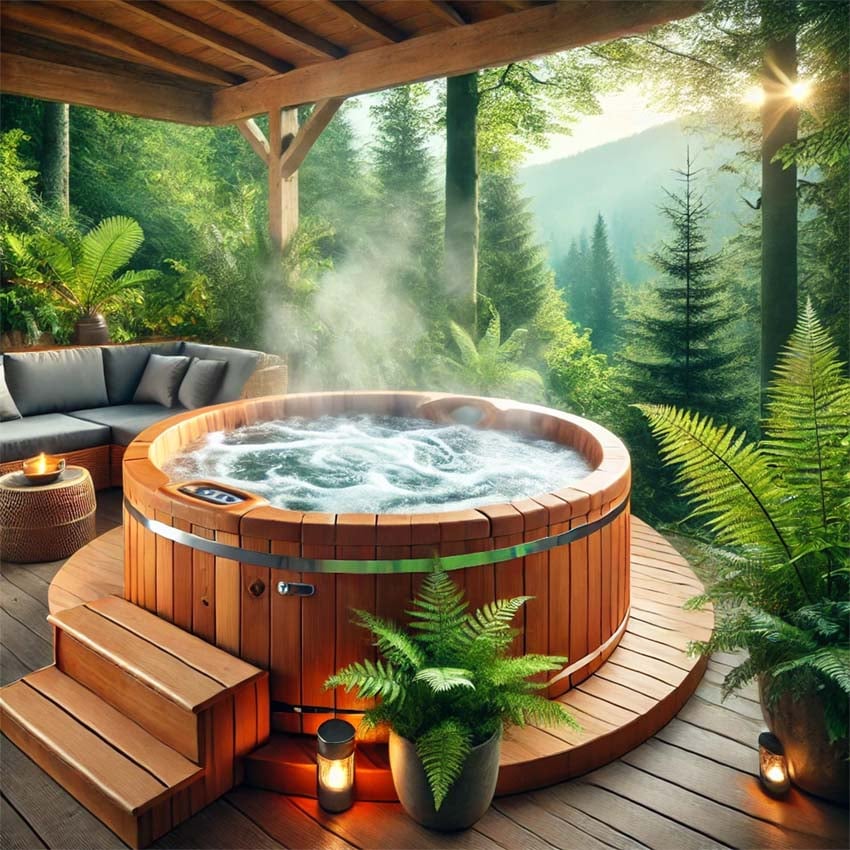5) Other considerations.
If you have a blower and will operate the tub in the winter, you should trace heat around the pipe coming from the wall fitting to the anti-siphon loop. Unplug the blower, electrically, in the winter, since you don’t want cold air blowing into the water, which will quickly lower its temperature.
Tape foil bubble wrap insulation around the jets and its flex hoses, which join the jets, in such a manner that the top air hose will get heated by the lower water hose by convection. Otherwise the air hose may freeze because water is stagnant in this hose. It is recommended that you do not open the jet air valves in the winter, if you want to reduce your energy bill.
We optionally supply a valve for the ozonator. While this valve should never be closed when the ozonator is plugged in, throttling the flow down will reduce the amount of cold air injected via the ozonator. If you are concerned about heat loss, then in winter use Oxy-Pur (MPS) instead of the ozonator. This doesn’t involve injecting cold air.
If possibly enclose the entire spa pack to hot tub pluming space with additional exterior insulation. But during the summer period this space needs to be provided with ventilation.
If you have any questions regarding the maintenance of your tub or have any experiences you would like to share, please call or email me any time.
Happy Tubbing!
Dan Jung
President




















